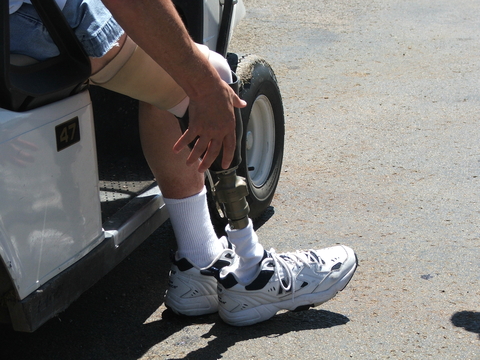A new technology for the pain experienced by amputees after an amputation is being pursued by Cleveland-based SPR Therapeutics. The company is using a $1.45 million grant from the National Institutes of Health (NIH) to provide lift for developing a fully implantable peripheral nerve stimulation (PNS) system to treat post-amputation pain.
The company reports that the $1.45 million grant small business innovation research (SBIR) phase II grant combines with $2.8 million in research monies already granted by the Department of Defense. The funding supports ongoing clinical trials to assess the safety and efficacy of SPR’s PNS therapy in the management of phantom and residual limb pain following amputation.
“Access to this technology opens the door to the treatment of many currently unaddressed chronic peripheral pain conditions, such as post-amputation pain, for which appropriate treatment options do not exist,” says interventional pain physician Steven P. Cohen, MD, director of pain research at Walter Reed National Military Medical Center and Professor of Anesthesiology & Critical Care Medicine and Physical Medicine & Rehabilitation at The Johns Hopkins School of Medicine and the Uniformed Services University of the Health Sciences.
According to a media release from SPR, using the company’s method of percutaneously stimulating peripheral nerves, researchers in Winston-Salem, NC, reported significant relief of phantom and residual limb pain in amputees and improvement in quality of life. As published in Neuromodulation, pain was reduced by 76%, on average.
This novel approach to PNS involves the percutaneous (through the skin) insertion of a very small medical wire, or lead. Ultrasound guidance is used to position the lead remote from the nerve, decreasing risk of nerve injury and making the procedure very amenable to the interventional pain management physician. Placement of the lead remote to the nerve also allows SPR’s system to preferentially activate the targeted sensory nerve fibers without activating pain or motor fibers, which is a challenge with other PNS approaches.
The NIH grant funding reportedly will be used to develop SPR’s second-generation implantable pulse generator for patients who require long-term stimulation to manage their chronic pain following amputation and other types of neuropathic pain conditions. The planned project will result in development of a small implantable device that can be comfortably placed within the residual limb of an amputee.
[Source: SPR Therapeutics]





